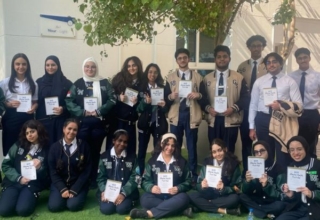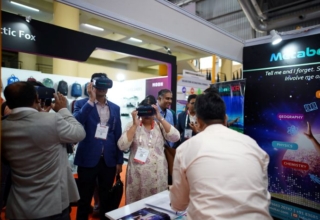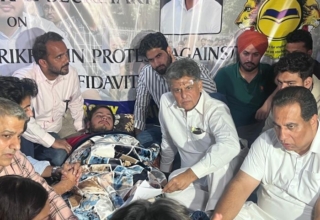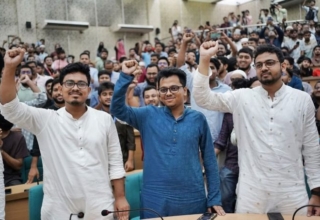

Contrary to a lot of expectation that education as an electoral issue will figure prominently in the ongoing election for the 17th Lok Sabha that began on April 11, this issue hasn’t as usual received much attention in campaigning and election speeches, even though it does find a customary presence in manifestoes of almost every political party having released manifesto. The tone and pace of the current election is moving on national security, rising unemployment, rural distress, polarization and all kind of trivia. Real issues of the people like education have been subdued.

Surprising? Despite India being at 131th rank in human development index and education being recognized as one of the 17 SDGs (sustainable development goal) by the UN, issues of education didn’t become part of electoral conversation. Political saliency of education is still not considered saleable to electorate. No big debates on education also reflect poorly on the media platforms and opinion leaders for not introducing and adding perspectives about the national education emergencies like lack of teachers, broken public school system, invisible impact of skills development mission, restive higher education ecosystem, and neglect of children.
“Education has lost again. Actually it has never won. Not a single Loksabha election has had education as a campaign issue. Everyone in politics, industry and civil society agrees that education is the most critical challenge that will determine whether we have demographic dividend or demographic disaster. May be political parties feel that since everyone agrees that education is super critical, there is no point in discussing it!” says Dr Parth Shah, president of Delhi-based think tank Centre for Civil Society and member governing council The Indian School of Public Policy (ISPP).
Education clearly has even a role in national security. According to Prof Geeta Menon from Jamia Milia Islamia University, New Delhi, and a former development professional, young Indians are to be prepared for social cohesion, peace, upholding constitutional values and importantly there is a need to create mental safety in their minds. “This is important given that in the country 90 districts are affected by left wing extremism, strife, and other violence. Traumatized children in these affected places need to be assured,” she added.
The only political party that has made education a plank and has made political investment in education as development is Aam Aadmi Party (AAP). Being comparatively a juvenile party and having being checkmated by BJP led government, its writ and appeal at present doesn’t run beyond Delhi where it runs the state government for last four years. “There is a deliberate attempt to keep children undereducated, else how will be this party (BJP) be able to find support for divisive politics,” comments Manish Sisodia, AAP leader and Delhi’s education minister.
In terms of what various political parties have assured in their manifestoes, is more or less the familiar rhetoric. BJP’s ‘sankalp patra’ is silent on raising expenditure on public education and so on expansion of Right to Education Act. In contrast opposition parties which include Congress, AAP, Samajwadi Party, TMC, CPI (M) etc have all shown their support for expanding Right to Education from K-12.
While the BJP’s manifesto promises to initiate a ‘Prime Minister Innovative Learning Program’ to bring together talented children for a certain period in a year in one place from all over the country and provide them with facilities and resources for them to excel, smartclass for every secondary class, establish 200 more KVs and NVs in the next five years besides increasing the number of seats in Central Law, Engineering, Science and Management institutions by 50% in the next tenure, still it has made no commitment on raising expenditure on public education. “We will establish National Institutes of Teachers’ training. These institutions would provide four-year integrated courses that would set the standards for quality teachers in our schools. Music University, Police University, Hospitality and Tourism University will be set-up. A new regulatory mechanism to grant autonomy to higher education institutions will also be set up,” says the Manifesto. It also promises setting up one medical college in every district.
Congress on the other hand proposes School Education be transferred to the State List in the Seventh Schedule of the Constitution while retaining the subject of Higher Education in the Union List. It has promised to double the allocation for education to 6% of the GDP in the next five years. Vocational training as a compulsory component in secondary school education, public universities in under-served areas, restoring the 200-point roster system in Central Universities, and increasing the Gross Enrollment Ratio (GER) in Higher Education to 40, are part of Congress manifesto. It also proposes a State-level examination in the place of NEET for medical admission.
CPI(M) manifesto proposes major expansion of public educational system – schools and higher education – with quality upgradation; public expenditure on education to be 6 per cent of GDP; and ending communalization of education system and ensure its democratic character. Universalisation of the ICDS to cover all children from the age of 0-6 years. Provision of adequate number of child friendly playgrounds in each district so that they can play outdoor sports. Establishing a Common School Education System; stop closure or merger of government schools; upgrade government schools on the Kerala model are some key proposals in its manifesto.
“The reform idea that i fully support is the separation of functions in higher education: The functions of regulation, rating of by quality and of funding of colleges and universities would be done by separate agencies. However, the same separation of functions need to apply to school education too. We have seen tremendous impact of the separation of functions in telecom, banking and insurance. This is the most fundamental systemic reform that would transform Indian education,” opines Parth Shah.
While moving of education issue to core would have put pressure on politicians to accord education the priority it deserves in national developmental agenda, nevertheless let’s hope the new government will work towards this end with full wisdom.










